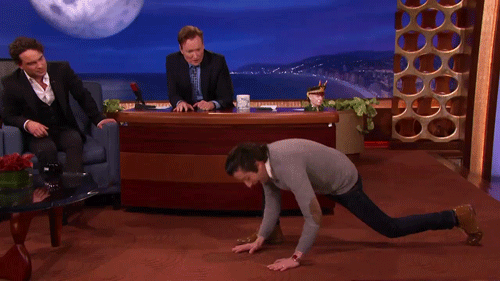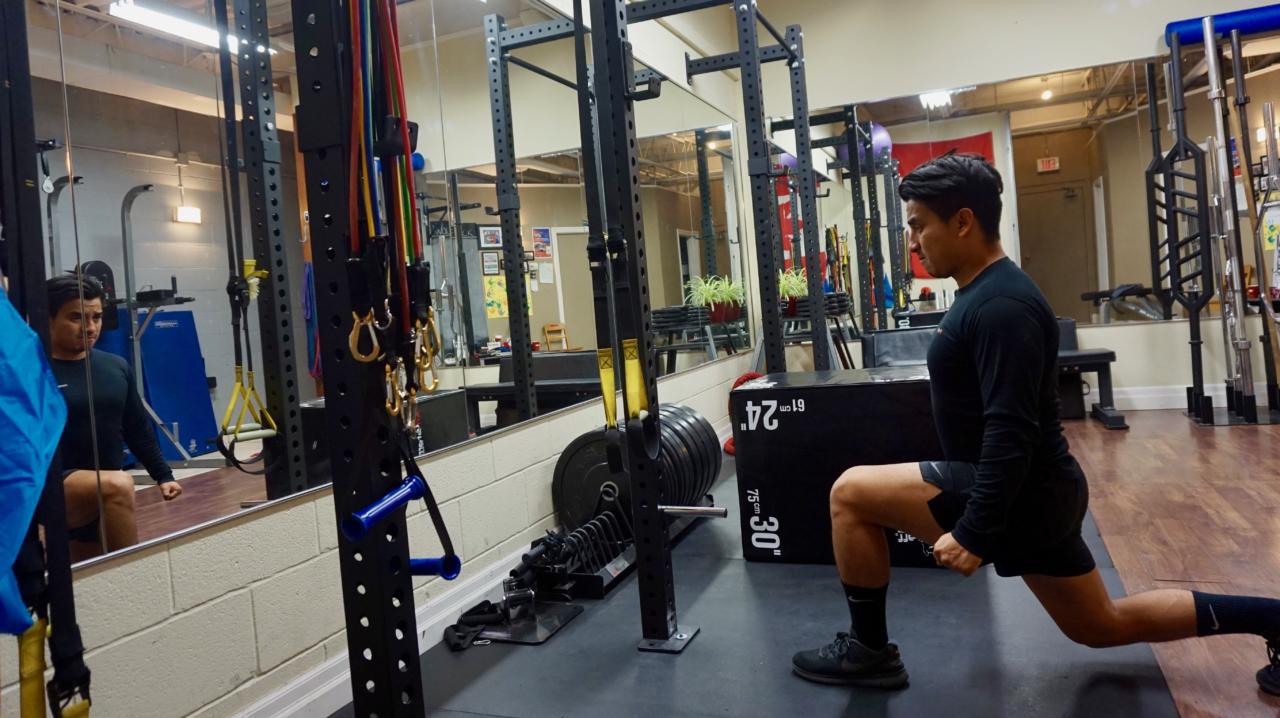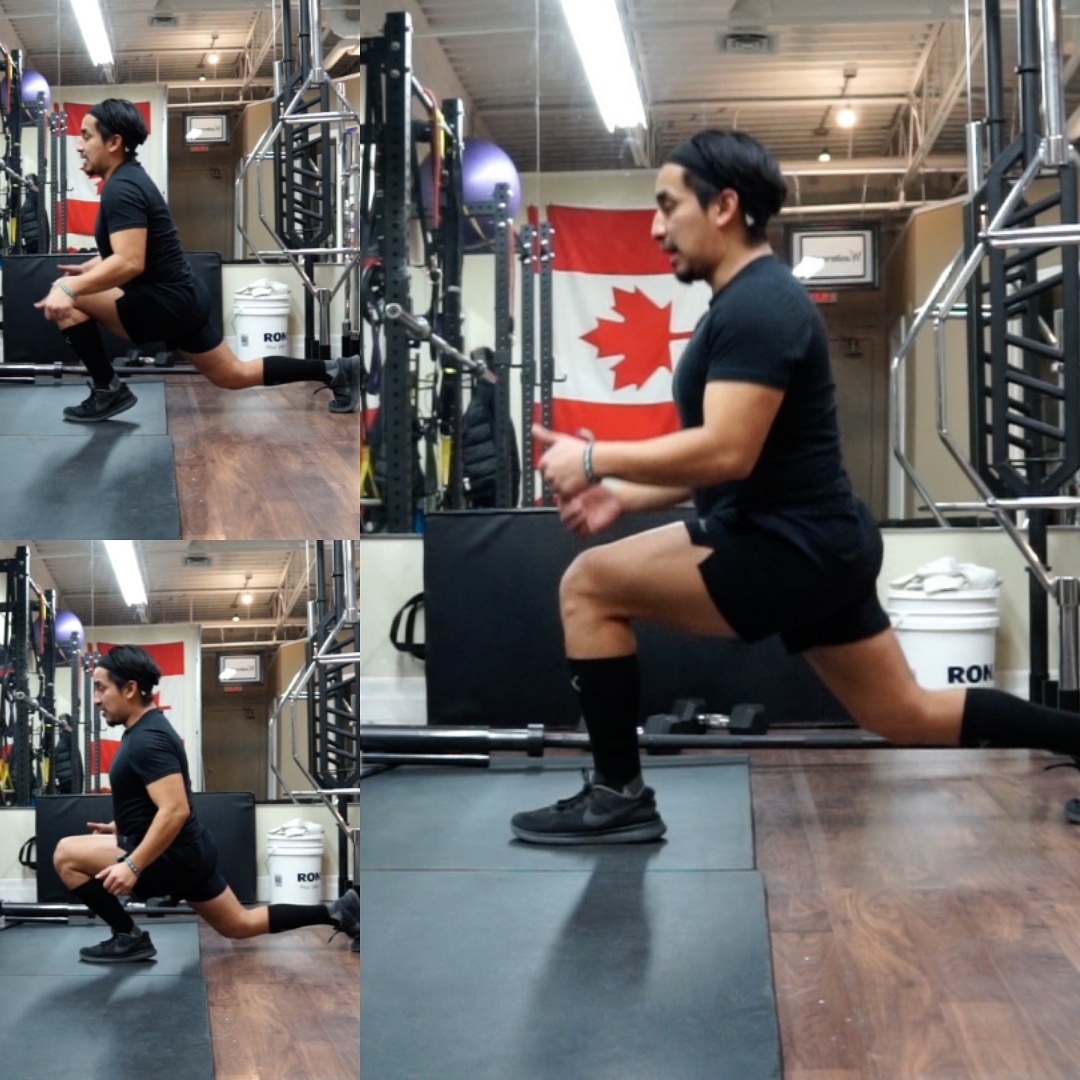THE BASICS
Reverse lunges are a great exercise for every occasion when done properly. They can be utilized in any training program whether you’re looking to get stronger, gain muscle, or lose weight. It is also a single leg exercise so it forces you to use your stabilizer and “core muscles”. Why the reverse lunge over the forward lunge? The reverse lunge requires less deceleration from the knee as you don’t need to use your knee to slow down your body when stepping back. Forward lunges also rely more on the quads which means there is a greater pull on the patella as the rectus femoris tendon (quad) attaches onto the patella.
I’m not sure saying forward lunges are evil as we still use them but it’s definitely an exercise that may cause you pain if you have any pre-existing knee injuries .The reverse lunge is more of a hip dominant exercise due to the backward step which makes the posterior chain work harder. A stronger posterior chain means a stronger and injury free you. Our hamstrings and glutes, especially the glutes, tend to take it easy due to desk jobs and our sedentary lifestyles. I like to start clients off with the split squats before moving on to the reverse lunges as the lunges are more complex and also add an extra degree of soreness. Soreness is fine in moderation, but you don’t want to be sore for 4 days after your first workout at the gym. You want to first master the basic movement before increasing the weight or complexity level.
COMMON REVERSE LUNGE MISTAKES
I think it’s clear that I love lunges. My clients not so much as they can be exhausting. In order to get the full benefits, we need to make sure that lunges are done properly so that we don’t cause injury or reinforce poor movement patterns. These are the most common errors I see with clients when they first start training:
1. Lunging up onto your toes (Top Left Picture):
You want to drive yourself up through the mid foot and heel. Going up on your toes puts more pressure on the knee as the knee naturally shifts anteriorly in that position. You will generate a lot more force when you drive into your heel and mid foot as opposed to your toes. This also applies to squats and deadlifts. You can think of pushing yourself through the floor to get yourself up. You may end up on your toes because you have some quad dominance and a weaker posterior chain, which is even more reason to work on the reverse lunges. Work on perfecting the movement pattern and strengthening the posterior chain via deadlifts variations, glute pull throughs, bridging, and other hip dominant exercises.
2. Forward Knee Drive During The Ascend (Bottom Left Picture):
You’re essentially trying to push your bodyweight up with your knee when you lunge this way. As you can imagine, this is a lot of unnecessary stress and pressure on the knee. You want to keep a relatively vertical shin angle when going up as seen on the right hand side of the picture. It’s ok for the knee to go forward as long as it’s not excessive as seen in the bottom left picture.
3. Knee(s) Caving in AKA Knee Valgus:
Think about pushing your hips out as you lunge down as knee valgus tends to stem from weak hips (Gluteus Medius). You want to make sure that front and back knee aren’t collapsing. Being conscious of the knee valgus and concentrating on your hips can help prevent this. Strengthen the hips and mobilize the ankles to prevent any injuries down the road. Knee valgus is also very common in running so be aware of your running gait.
4. Feeling Unstable:
Tense your upper body by making two fists and brace your core. Think of tensing your upper body while doing any lower body exercises, and tensing your lower body while doing upper body exercises. You want the motion to be controlled. Go slower at first and really focus on the movement pattern. If you still feel unstable then try a TRX. The TRX takes away the balance component so you can just focus on the technique. It also takes stress off the joints so the TRX is pretty much the best, next to the trap bar.
Even Conan can recognize a bad lunge!

OTHER REVERSE LUNGE VARIATIONS
There are many reverse lunge variations. These are some that I like to use for myself and with my clients. I can’t stress enough the importance of mastering the basic movement pattern first before increasing the weight or complexity level! This goes for any movement pattern including the squat and hinge.
TRX Reverse Lunges:
A great exercise if you’re having trouble with balance, joint irritation, or a previous injury. The TRX makes the exercise less weight bearing so your joints will be happy. I keep the spine on a angle but still in neutral. I find people extend their backs if they try to keep their bodies completely straight. Keep a relatively vertical shin angle, brace your core, and drive into the heel/ mid foot while ascending.
Bodyweight Reverse Lunges:
Brace your core and tense your upper body during lower body exercises. Same cues as above. Make sure you can master this basic movement using your body weight before moving on.
Dumbbell Reverse Lunges:
Same cues as above but with weights. Tense your upper body and start with lighter weights before moving on. Get your shoulder blades down and back if you’re someone who tends to hunch.
Glider Reverse Lunges:
The gliders make the posterior chain work even more. You can even keep the leg straight when going back instead of bending the knee for greater glute activation.
.
Deficit Reverse Lunges:
The deficit allows for greater range of motion, which hits the glutes and hamstrings to a greater degree. Make sure the box isn’t too high and keep the movement controlled
Landmine Reverse Lunges:
The landmine forces the hip to work more because of the angle and positioning of the bar. Brace your core and stay tight on the opposite side. I like to tell my clients to make a fist to tense their body. It can be held in many different positions as seen in the video.
Barbell Reverse Lunges:
Keep the spine in neutral, like a regular lunge, to prevent any flexion or extension while lunging. The regular barbell squat pattern should be mastered before doing this
Front Squat Reverse Lunges:
This exercise is life because It consists of a bit of everything. It makes your upper back work like a front squat would because you need to keep yourself up as your lunging back. Think of driving your elbows up as you lunge down. It also makes your “core” work because of the bar placement and anti-flexion component. Lastly, get the bar close to your neck. It won’t be the most comfortable position but it works!


